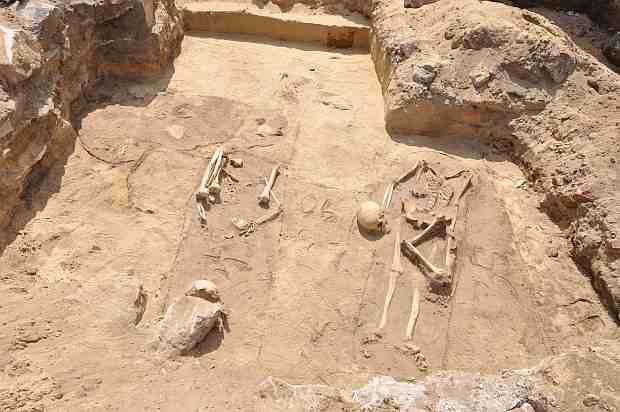By: Amanda Froelich,
True Activist.
It seems the fetish for vampires spurred by Twilight and True Blood wasn’t shared in the early 1900’s, specifically in Gliwice, southern Poland. The surprise discovery of four bodies took place as construction workers were digging in preparation for laying a road.

All skeletons were buried with their heads between their legs, a procedure that was followed for possible ‘vampires’. Another similar burial site was found in 1914 in the village of Stare in Masovia.
According to archaeologist Dr. Jacek Pierzak, there were no earthly possessions or jewelry found, and, at the moment, the age of the skeletons cannot be determined, but tests will be carried out for that purpose.
Theories regarding the non-traditional method vary. Archaeologists suggest that the burials may have been done in such a fashion as to protect locals from vampire attacks. Others deem it possible the skeletons were victims of cholera epidemic.
The accidental finding in Poland hasn’t been the first of superstitious burials unearthed, however. At a later date, another grave site in Bulgaria with a male skeleton, complete with an iron stake plunged through his chest, was also discovered. Coins from the 13th and 14th century suggest the medieval ritual was carried out to protect from vampires.
At the archaeological Perperikon site, it seems a decade of excavating has shared many forms of religious activity dating back 7,000 years. With over 100 remains of vampire-treated bodies in Bulgaria – all men, all prominent citizens – it would seem more than suspicion was being tended to.
According to pagan belief, those who were considered ‘bad’ during their lifetime might turn into vampires after death unless stabbed in the chest with a wooden or iron rod before being buried. It seems vampire legends form an important part of the region’s folklore, though the concern of the un-dead has been shared all around the world.
The term vampires was first used in 1700 AD, but as mythological beings mentioned in cultures all over the world from Mesopotamia to Ancient Greece and America, their roots are somewhat unknown. Labeled as ‘blood suckers’, legends of their beginnings, such as Hebrew ‘Lilith’, Greek daemon Laima, or a Phillipines saint named Alan, relate them with the Gods of many cultures. So, folk lore or truth, you decide.
Sources:


